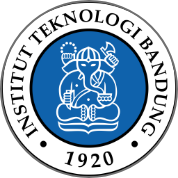3 Jan 2008: Gilbert Strang’s lectures
A brief bio:
Gilbert Strang is a Professor of Mathematics at Massachusetts Institute of Technology and an Honorary Fellow of Balliol College of the University of Oxford, United Kingdom. His current research interests include linear algebra, wavelets and filter banks, applied mathematics, and engineering mathematics. He is the author or co-author of six textbooks and has published a monograph with George Fix titled An Analysis of the Finite Element Method. Professor Strang served as SIAM’s president from 1999-2000, chaired the U.S. National Committee on Mathematics from
2003–2004, and won the Neumann Medal of the U.S. Association of Computational Mechanics in 2005. He is a fellow of the American Academy of Arts and Sciences.
Here are the abstracts of the lectures :
1. Starting with Good Matrices
This talk will select challenge problems and pieces of lectures to illustrate ideas for our teaching — all of them open for discussion and improvement. I start the course with examples. I believe that linear algebra is *the* most important subject in college mathematics. And it has changed more than any other basic course. Calculus and differential equations are wonderful: quite right. But the scope of science and engineering and management (and life) is now so much wider, and linear algebra has moved into a central place. I will comment on the spirit of the course, and the content. The web page web.mit.edu/18.06 reflects the continuing development of this approach to teaching “applied” linear algebra.
2. Minimum Cuts and Maximum Area
The oldest competition for an optimal shape (area-maximizing) was won by the circle. We want to give the thousandth proof ! Then we measure the perimeter in different ways, which changes the problem (and has applications in medical imaging). If we use the line integral of |dx| + |dy|, a square would win. Or if the
boundary integral of max(|dx|,|dy|) is given, a diamond has maximum area. When the perimeter = integral of ||(dx,dy)|| around the boundary is given, the area inside is maximized by a ball in the dual norm.
The second part describes the **max flow-min cut theorem** for continuous flows. Usually it is for discrete flows on edges of graphs. The maximum flow out of a region equals the capacity of the minimum cut. This duality connects to the isoperimetric problems that produce minimum cuts. But the flows are hard to find and a prize is unclaimed.


No Comments